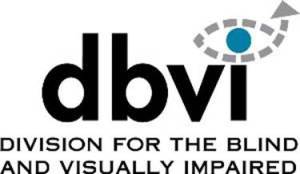| When you open a new document in most document editor programs, your cursor will be at the beginning of the document. The page is ready to take your input from the keyboard. |
| Exercise: Go to your desktop and open Microsoft Word. Type out the line, “Hello World! I am writing in Word with JAWS!” |
| When you’re done, move the cursor over to the left so that it is positioned right behind the exclamation point after, “Hello World”. You can move the cursor by pressing the left arrow button. What does JAWS do when we move through our writing with the arrow buttons?
|
| As we move through a line or word or paragraph with the left and right arrow keys, JAWS will read out the character we just moved past. For example, if my cursor is at the end of the word “cat” and I press left arrow 3 times, I will hear JAWS say “t”, “a”, “c”. |
| With the cursor in position, press the delete button 24 times. What does JAWS do when we delete characters? What is this similar to doing? |
| As we delete characters, JAWS will read the character we are about to delete. For example, if my cursor is at the beginning of the sentence, “I love cats”, and I press delete 11 times, I will hear “space”, “l”, “o”, “v”, “e”, space,”c”, “a”, “t”, “s”. If you hear JAWS say “blank”, it means you’ve reached the end of your content. Deleting characters is similar to using the right arrow button. |
| Now press the Backspace button 12 times. In this instance, what does JAWS do? What is this similar to doing? |
| The Backspace button will delete characters to the left of the cursor. It is similar to moving through the line with the left arrow key. |
| In our example document from above, see what happens when you use the up and down arrow keys. How does this differ from what JAWS did with the left and right arrow keys? |
| As you can see, the arrow keys move vertically between lines. As the cursor arrives on a new line, JAWS will read the entire line. This is different from left and right as those controls moved the cursor horizontally along and read characters. |
| What happens to the cursor and what does JAWS do when you press the Page Up button? How about when we press the Page Down button? What is this similar to? |
| The Page Up and Page Down buttons will move the cursor vertically through a document with half page jumps with each press. Continue pressing page up and you’ll arrive at the top of the document. Continue to press page down and you’ll arrive at the button. With each jump, JAWS will read the line. |
| The up and down keys and page up and page down are all great ways to move through a document. |
| Being able to select text is critical to working in a document. To highlight text hold shift and move the cursor. |
| Holding shift pressing the left or right arrow keys will highlight text one character at a time. Notice that you can only highlight in one direction at a time. |
| Since all the key commands we just learned for reading previous and next words, lines, and paragraphs also move the cursor, we can use them to highlight text. |
| Select previous/ next word |
Shift + Insert + Numpad 4 (left arrow)/ Numpad 5(right arrow) |
| Select previous/ next line |
Shift + Numpad 8 (up arrow)/ Numpad 2 (down arrow) |
| Select previous/ next paragraph |
Shift + Ctrl + Numpad 8 (up arrow)/ Numpad 2 (down arrow) |
| Holding shift and pressing Page Up and Page Down will select items by the half page. |
| Use the Windows hotkey Ctrl + A to select all the text in a document. |
| Now that you know how to select text, what to do? Well, there are a lot of things. You can read, copy, cut, delete, and replace it. |
| Read |
Shirt + Insert + Numpad 2 (down arrow) |
| Copy |
Ctrl + C |
| Cut |
Ctrl + X |
| Delete |
When text is selected, press Delete or Backspace to remove it. |
| Replace |
If you hit any character key while text is selected, the selected text will be replaced with the new input. |
| Text that is copied or cut is placed on the “clipboard”. The clipboard is an invisible space on your computer that temporarily stores data. Every time you use the clipboard, the old data is dumped for the new data. |
| Read the clipboard |
Insert + Windows Key + X |
| Paste the clipboard |
Ctrl + V |
